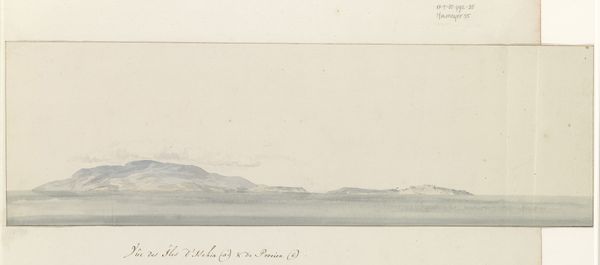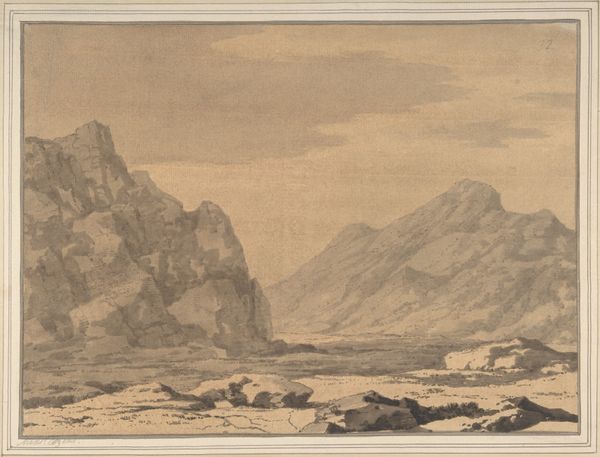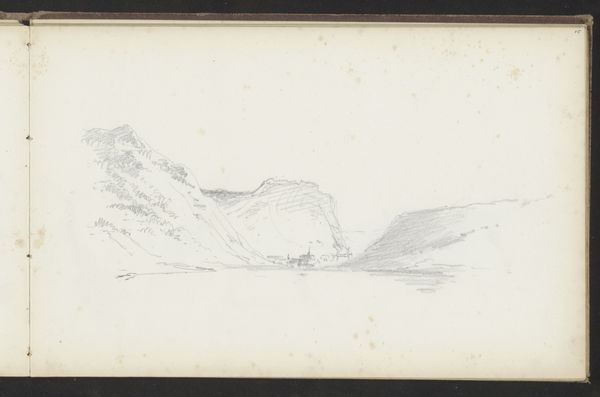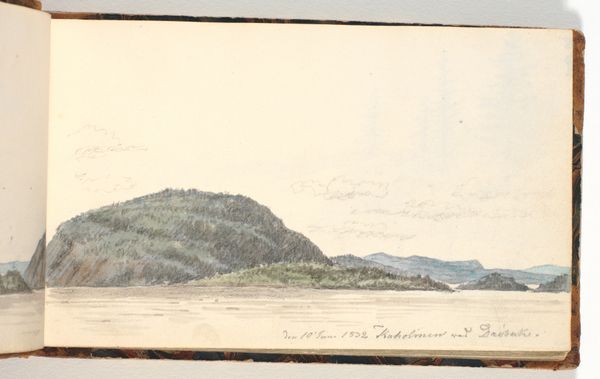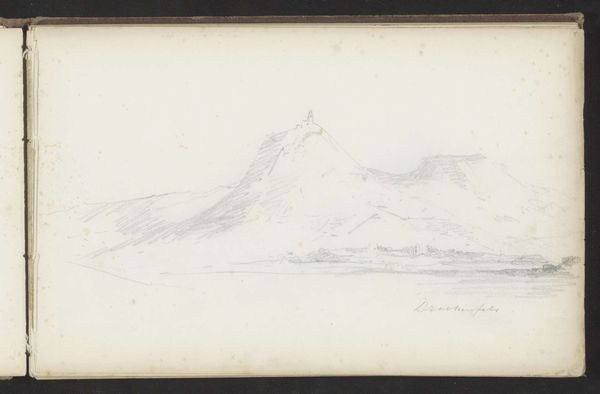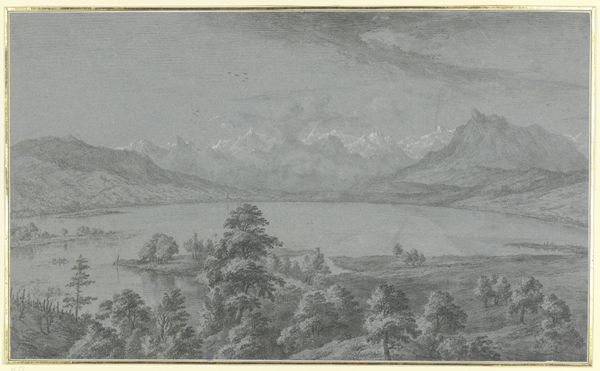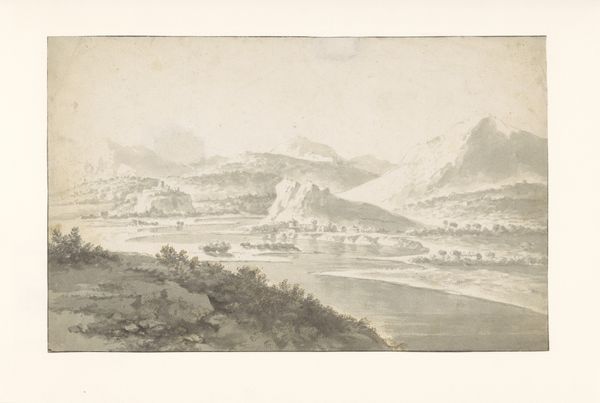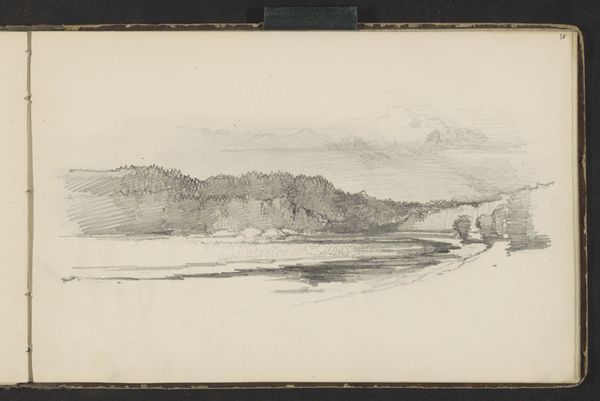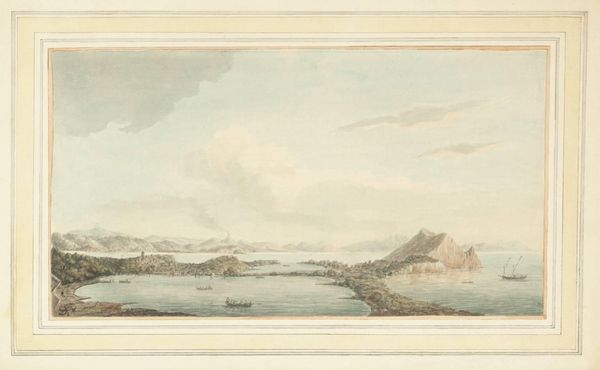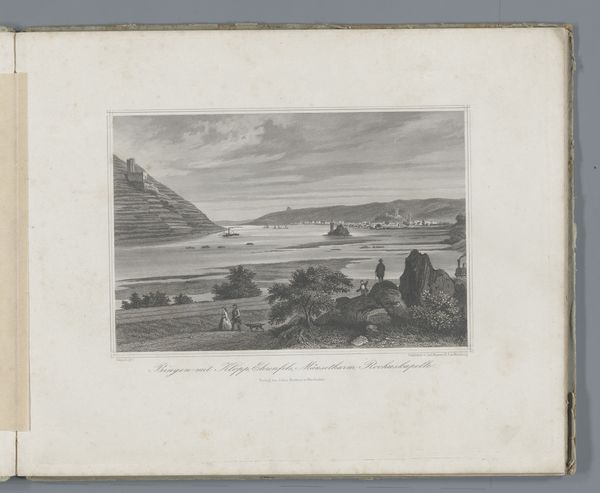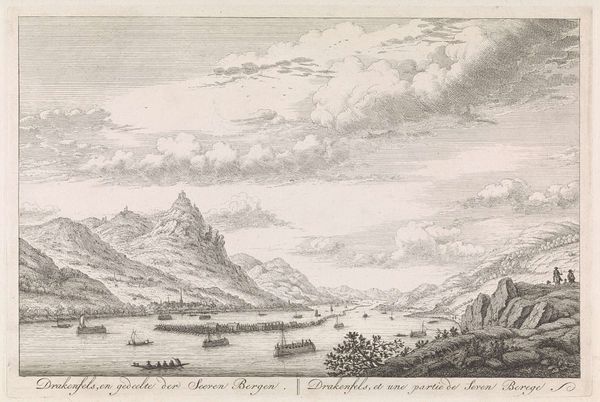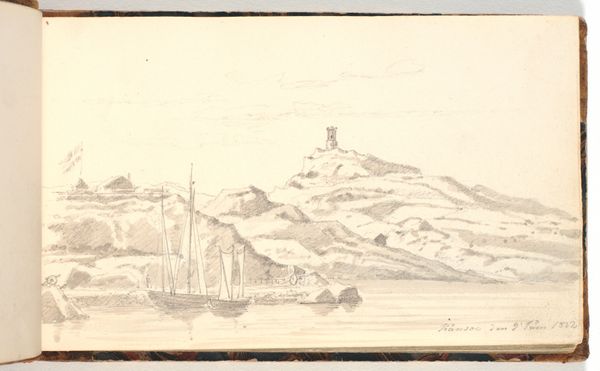
drawing, pencil
#
drawing
#
pencil sketch
#
landscape
#
romanticism
#
pencil
#
realism
Dimensions: 107 mm (height) x 179 mm (width) (bladmaal)
Editor: Here we have "Fjordlandskab," a pencil drawing by Martinus Rørbye from 1832. There's something so serene about the scene; I'm really drawn to the stark simplicity of the medium and the quiet mood it evokes. What catches your eye in this work? Curator: I find it fascinating to consider this drawing within the context of early 19th-century Romanticism, and specifically how the means of production themselves shaped its aesthetic. Pencil sketches, like this one, became increasingly popular with the rise of industrial graphite production. Editor: Oh, that's interesting! Curator: This readily available material democratized artistic practice, making landscape drawing accessible to a broader segment of society, not just the elite. So, consider, how does the very materiality of pencil – its portability, affordability, and ease of use – contribute to the artist's ability to capture the fleeting atmospheric conditions and subtle tonal gradations that define this fjord landscape? Editor: I never really thought about the availability of the material impacting the art itself. Curator: Exactly! The shift towards commercially produced pencils also implies a shift in the artist’s relationship to their tools. Instead of hand-preparing materials, Rørbye is engaging with an industrialized supply chain. How does this potentially influence the perceived value, or the artistic intent behind a “quick” sketch like this, versus a finished painting of the same scene? Editor: It feels almost… less precious, maybe? More about capturing a moment. Curator: Precisely. It reframes the art less as high art, more as documentation or exploration tied intrinsically to broader material conditions. We're not just looking at a pretty landscape, but at the intersection of art, industry, and shifting social values. Editor: This conversation really opened my eyes to the bigger picture surrounding what appear to be mere sketches. I'll definitely look at art through a different lens now, thinking more about the material conditions of their creation.
Comments
No comments
Be the first to comment and join the conversation on the ultimate creative platform.
